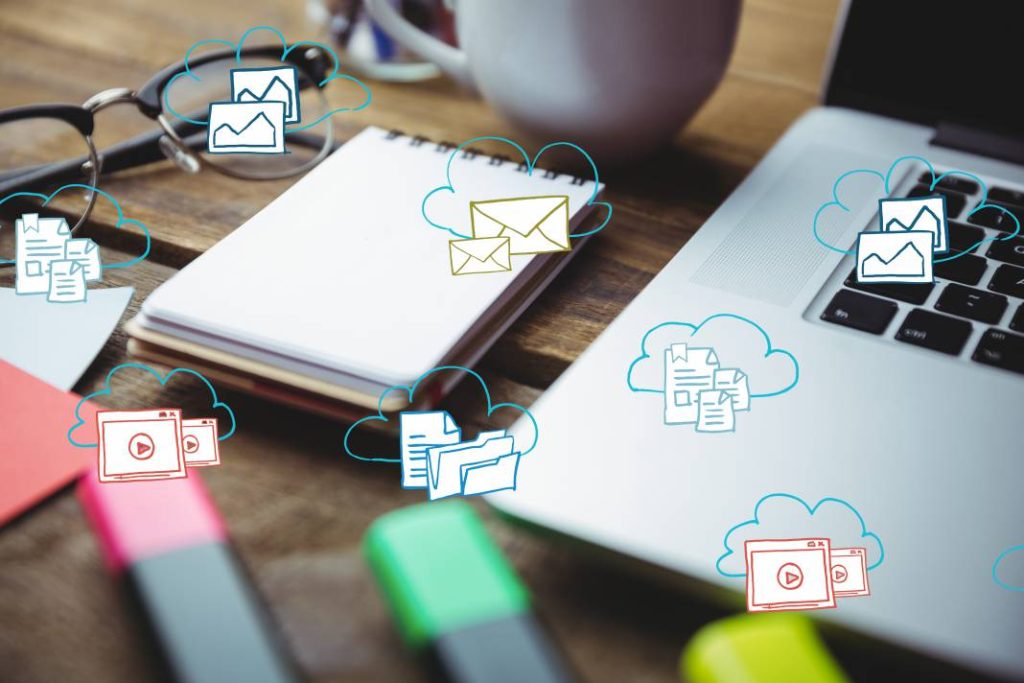B2B Brands benefit from Programmatic Marketing
Programmatic marketing empowers B2B brands as automated tools & technologies based on the principles of AI & ML for media buying.

Prologue
Programmatic advertising is the use of automated tools & technologies based on the principles of artificial intelligence (AI) and machine learning (ML) for media buying. In contrast to the traditional methods of digital advertising, this advertising technic utilizes data insights & algorithms to serve ads to the right users, at the right time & the right place. Thus, B2B brands programmatic marketing media buying combines creativity & powerful technology to deliver personalized experiences to the customers across multiple screens & is an essentiality for B2B brands marketers as they continue to compete fiercely to optimize the experiences of their end-users.
According to a recent study by IAB, 65% of the marketers who leveraged programmatic advertising, 18% moved it in-house & 47% are planning to bring various functions in-house. According to eMarketer, programmatic buying will amount to about $14.88 billion of approximately $58.6 digital advertising budget this year. Furthermore, according to AdWek BrandShare, 63% of B2b marketers plan to increase their expenses on the programmatic ads.
According to marketing Profs within the B2B marketing sphere, the adoption rate for programmatic has witnessed an upsurge. This has shown up both in terms of advertisers as well as publishers that are partnering up with the programmatic ad exchanges to meet the ever-increasing demand & amount of ad spent dedicated to programmatic marketing.
LinkedIn proclaims that the marketers who aren’t exploring their alternatives within the programmatic advertising realm might soon be left behind of those who are using it already in one way or the other. The marketing technologies associated with programmatic ads are subject to constant change and LinkedIn itself offers the prime ad real estate leveraging programmatic.
Undoubtedly, programmatic buying epitomizes the future of all advertising endeavors.
As compared to the B2C companies, the B2B brands have been relatively slower & speculative with the adoption of programmatic advertising. The particular need to introspect & improve their programmatic advertising tactics in the following three departments:
According to a blog by Alexa, targeting is one of the utmost important strategies in marketing.
A research by Forrester depicts that buying platforms, data providers & publishers are now increasingly responding to the demand of data-driven targeting (particularly when it comes to the core marketing technologies such as account-based marketing) for the B2B companies. This is a breeze of fresh wind that the B2B industry needs to sustain with & multiply as the ball is now in their court as compared to the scenario 5 years ago when data-driven targeting & allied mechanisms were monopolized by the B2C brands.
b. Integration of the data management platforms & quantification of ROI from ad expenditure:
According to research by Dun & Bradstreet, 90% of the B2B brands & agencies believe that the use of data & analytics is changing the way they have been conventionally handling advertising & marketing.
It has always been a challenge for the marketers to track data related to their programmatic ad expenditure & they have been constantly failing to co-relate the marketing budget spent with the increase in the sales conversions.
To combat this problem the marketers need to brainstorm to understand how they can integrate the key metrics resonating with their internal teams, ad agencies & ad tech, partners. Defining & architecting the Key Performance Indicators (KPIs) and aligning them with the immediate & long term objectives of the brands, internal teams as well as ad agencies, ensures that a community niche is in place where data-driven insights can be fetched based on the machine learning algorithms to resolve several discrete business issues of organizations – in particular, those related to budgeting issues & other integrated insights where transparency is desired.
Furthermore, a big challenge for the programmatic ad companies also remains that they need to justify quantitatively how they aid marketers with bringing together the data from comprehensive data management platforms (which often have CRMs & inbuilt machine learning algorithms).
c. Being Wary of Brand Safety:
B2B marketers need to be aware of fraudulent instances when it comes to programmatic advertising.
According to research published by ANA/Forrester responding to the issues of forgery & brand safety, 45% of the marketers have targeted the whitelists while 51% of them have aggressively updated blacklists.
Furthermore, a report by the Digital Marketing Institute reveals that the programmatic ads have a standard of 16% fraud within the industry & while it is lower in percentage than the instances of fraudulence associated with the display ads, it still is a grave area of concern.
Abiding by the best practice guidelines is important for all parties in the interactive advertising landscape (IAB), wherein the AdTech industry does everything possible towards promoting brand safety & inspiring trust.
Programmatic media buying can be categorized into the following three different types:
- Real-Time Bidding (RTB):
RTB is also called as open auction & is something that happens when inventory prices are decided through an auction in real-time. RTB is meant for any advertiser or publisher & is a highly cost-efficient process to buy media with a large audience.
- Private Marketplace (PMP):
PMPs are similar to RTBs except for the fact that there’s a restriction on who can take apart. Using an invite, the private marketplace only allows selective advertisers access. In some instances, however, the publishers might undergo a selection process that allows them to apply for an application.
- Programmatic Direct:
This occurs when a publisher surpasses auctions, selling media inventory is having a fixed cost per mile (CPM) for an adviser or many of them.
Furthermore, the programmatic ecosystem is also studded with the following three main constituents:
1. Sell-Side Platform (SSP):
This software allows the publishers to sell the impressions of display ads, mobiles & videos to potential buyers, in real-time. This includes ad exchanges, networks, & DSPs. This allows the publishers to better control the cost per mile (CPM) as well as their inventories.
2. Demand-Side Platform (DSP):
This software allows agencies & advertisers to buy ad inventory cross-platform.
3. Ad Exchanger:
Using this, the supply-side feeds to the ad exchange. The DSP is connected to the ad exchange, enabling advertisers, agencies, networks & publishers to buy & sell ad space. Using the bidding prices, the inventory prices can then be agreed upon through the bidding process.
An inventory is usually bought through a real-time auction. The advertisers often pay per impression, using the programmatic channels which ensure that the right audience has been targeted. Leveraging automation the purchase made from the programmatic media is speedy & cost-efficient as well as is matched with traditional media buying.
How B2B Marketers can benefit by Scaling up Programmatic Advertisement
According to research by marketingprofs.com, programmatic has undergone massive growth in United Kingdom (UK), Germany, China, France, United States & Australia. Having said that, as many as 80% of the programmatic advertisers value programmatic ads for audience targeting, maintaining transparency, generating real-time insights & in aiding to the performance optimization in real-time.
The programmatic media buying is expedient for the marketers in the following ways:
1. Optimizes the ad Expense:
Using the programmatic advertising landscape the marketers can fetch all the relevant details about the performance of their ads in real-time. Since media buying is done in real-time, the marketers have all the necessary resources to optimize their performance, using data-driven insights in real-time.
2. Facilitates the Hyper-Targeting of Personas:
Most of the programmatic advertising software has over 30 different options to select the target audiences & bid on them or to target them.
3. Efficient cross-channel Advertising:
Programmatic ads ensure that marketers can go beyond Google & Facebook ads to discover their audiences across the globe using a variety of device platforms such as mobile desktop & tablets.
As opposed to the multi-channel targeting strategies, programmatic marketing assures that the marketers can integrate their media buying & reach their audience on a single platform. They can also run better performing ads such as rich media & native ads that are interactive as well as personalized.
4. Real-time tracking & Optimization of Ads:
Programmatic ads can be manipulated & adjusted in real-time to suffice the needs of the target audiences. Unlike conventional display ads, the marketers don’t need to wait till the end of the month or over a long while for trend measurement. Using non-disruptive ads, programmatic marketing ensures that marketers can reach target audiences at the right time. As opposed to the conventional ads that create traffic the programmatic marketing ensures buying an audience.
5. Helps in Articulating Error-Free & Cheaper Campaigns:
Not only the programmatic marketing leverages artificial intelligence (AI) & the principles of machine learning (ML) to ensure that the advertising budget is lower as compared to the human endeavors but also ensures that the buying & selling of the digitized ads is free of errors. Also, having real-time insights creates a better probability of running more successful campaigns. The campaigns are meant to target the niche-specific buying audiences’ clusters based on the real-time data insights.
Bringing It All Together
Programmatic advertising is often considered to be one of the hardest of technologies to implement. However, if the B2B marketers do their research & figure-out the ways to do away with the core challenges surrounding the same, they can effectively run a successful programmatic marketing campaign.
In addition to driving exemplary personalization & streamlining profitable customer journeys, programmatic advertising is also a way to effectively automate media buying so that the marketers can precisely quantify the returns on their marketing investments (ROMI). All that is required is an investment in terms of human resources, money & time. Programmatic advertising is all set to revamp B2B marketing for optimizing customers’ experiences & helping brands optimize their revenues to thresholds never thought before.
We, at Valasys Media, employ hyper-targeted campaigns to help our customers with their core bottom-line endeavors such as optimized users’ experiences & an increased return on marketing investment (ROMI). Our custom-made services such as lead generation, account-based marketing, lead nurturing, event promotion services, list building services & content syndication services have all been designed to draw attention to the exact requirements of our clients & to catapult excellent services to best suit their needs. For the furtherance of a perennially healthy sales pipeline & for deciphering the pathways to an excellent Return on Marketing Investment (ROI), feel free to get in touch with our team of experts.



